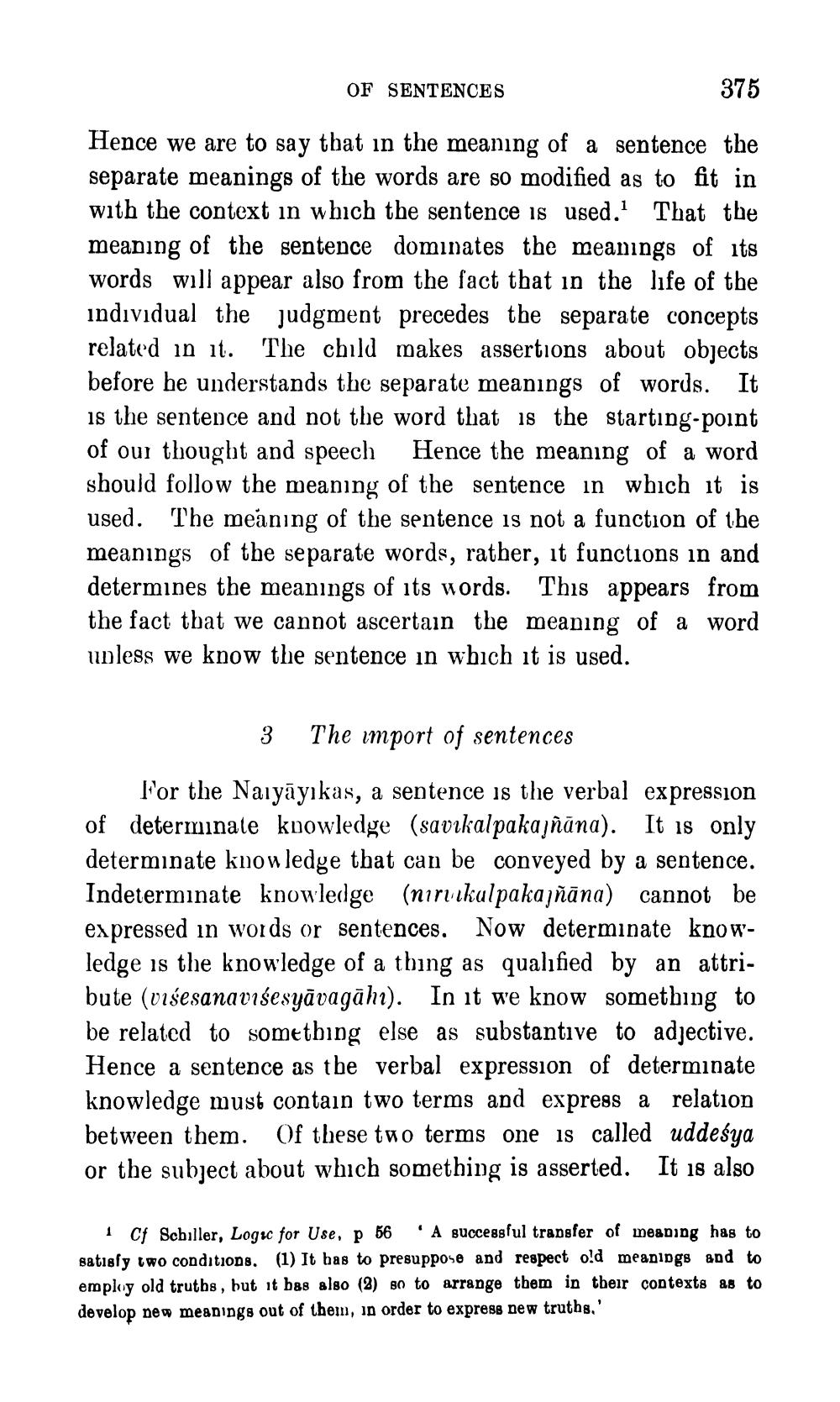________________
OF SENTENCES
375
Hence we are to say that in the meaning of a sentence the separate meanings of the words are so modified as to fit in with the context in which the sentence is used. That the meaning of the sentence dominates the meanings of its words will appear also from the fact that in the life of the individual the judgment precedes the separate concepts related in it. The child makes assertions about objects before he understands the separate meanings of words. It is the sentence and not the word that is the starting-point of our thought and speech Hence the meaning of a word should follow the meaning of the sentence in which it is used. The meaning of the sentence is not a function of the meanings of the separate words, rather, it functions in and determines the meanings of its words. This appears from the fact that we cannot ascertain the meaning of a word unless we know the sentence in wbich it is used.
3
The import of sentences
For the Naiyāyikas, a sentence is the verbal expression of determinate knowledge (savikalpakajñāna). It is only determinate know ledge that can be conveyed by a sentence. Indeterminate knowledge (nirukulpakajñāna) cannot be expressed in words or sentences. Now determinate knowledge is the knowledge of a thing as qualified by an attribute (višesanavisesyāvagāhi). In it we know something to be related to something else as substantive to adjective. Hence a sentence as the verbal expression of determinate knowledge must contain two terms and express a relation between them. Of these two terms one is called uddeśya or the subject about which something is asserted. It 18 also
1 Cf Scbiller, Loguc for Use, p 56 A successful transfer of meading has to satisfy two conditions. (1) It has to presuppose and respect old meanings and to employ old truths, but it has also (2) bo to arrange them in their contexts as to develop new meanings out of them, in order to express new truths,'




